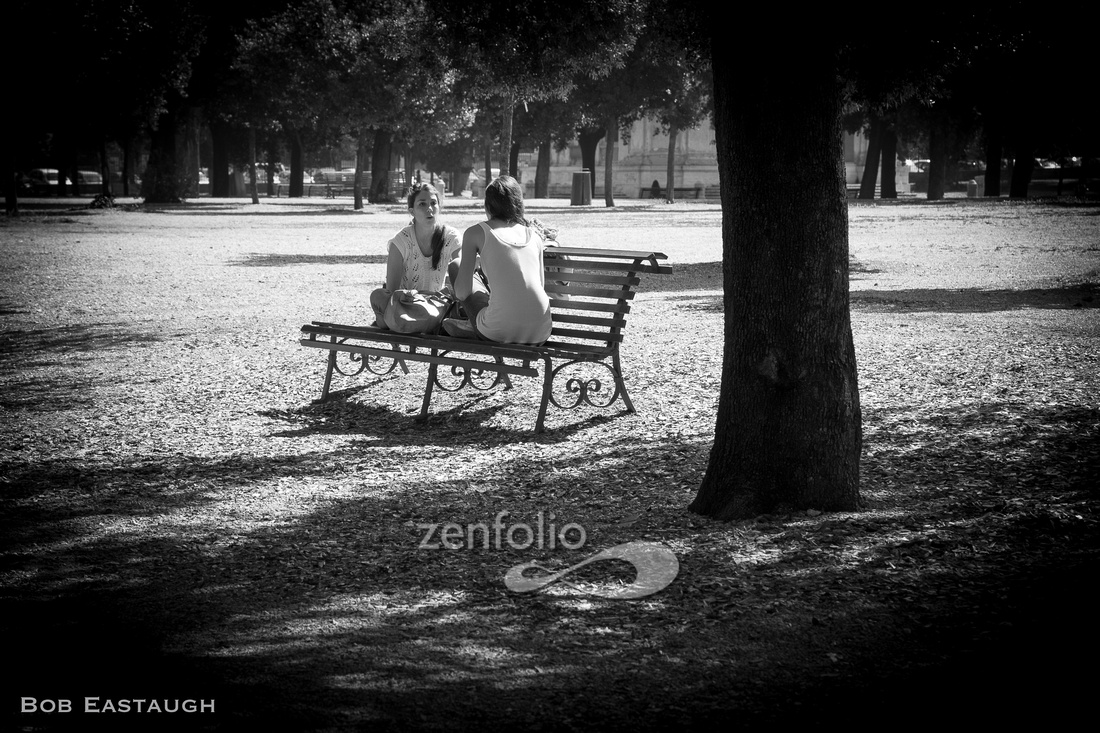Street Photography: Some Thoughts (and Examples)
The most recent post featured photos taken in Rome in 2024. Some were examples of the genre usually called “street photography.” Most readers who have gotten this far know probably what “street photography” is. Or maybe not. Maybe they know it when they see it. Or maybe not.
Rome 2024
 IMG_1652-4
IMG_1652-4
 untitled-1584IMG_1584
untitled-1584IMG_1584
 untitled-2305IMG_2305-4
untitled-2305IMG_2305-4
Since the dawn of photography in the late 1830s and early1840s, photographers have taken candid, unposed pictures of strangers in urban settings. “Street photography” is a little misleading, since many “street photographs” were not invariably and literally taken in, on, or from streets. It is a generic term covering any urban physical setting, including sidewalks (Garry Winogrand) and subways (Walker Evans) or barber shops (Weegee). And even streets (Henri Cartier-Bresson).
They are typically candid, unposed, images of people who haven’t explicitly consented to being photographed; subjects often don’t even know they are being photographed. Sometimes there may seem to be implicit consent, if the subject realizes a photo is being taken but doesn’t object or even makes eye contact with photographer and the camera’s lens. There can be explicit consent, but it is rare. Dianne Arbus’s images of consenting subjects don’t seem to me to be street photographs in the traditional sense. And it turns out that Winogrand actually posed a few of his most famous images, implying both explicit consent and even complicity. Although these pictures might be evicted from the street photography genre by purists, they seem so archetypical (and are so admired) it would be hard to claim persuasively that a given Winogrand image didn’t qualify.
Not every street photograph has a human subject. Non-human subjects, such as dogs, chairs, and signs, can qualify. Of course those pictures may impliedly depict humans who are outside the frame: the dog walker or the person who vacated the chair or posted the intriguing sign.
Street photographs are also likely to pose “what” and “why” questions. The first and most obvious inquiry: what are the subjects really doing and why, potentially raising issues about their emotions and motives. The second inquiry is less obvious: why did the photographer take the picture and then choose to share it (potentially selecting it from many others), and — more intriguingly — what message is the photographer silently conveying, intentionally or not, about the subject and image? This may reveal something of the photographer’s own motives and emotions and judgments. No doubt the photographer thought the scene interesting. But why? Did the photographer consider it interesting, as humorous, emotional, revealing, fraught, ironic, incongruous, or too puzzling to be deciphered? And how did the photographer regard the subject? With empathy, curiosity, admiration, antipathy?
“Street photography” somehow seems easier in European cities. Whether it is actually easier, or just seems easier, is debatable. True, because every tourist seems to be pointing a camera or cellphone, being photographed seems common-place (and unavoidable) in crowded European urban spaces, even though modern Euro-zone privacy laws may actually limit candid street photography of nonconsenting subjects.
In any event, Rome has provided subjects for some of my favorite images of the genre. Here, with their working titles, are some 2012 photos that I particularly enjoyed taking and processing.
Red
 K03C8453
K03C8453
Coca-Cola
 K03C8569
K03C8569
Gelato
 K03C8530
K03C8530
Nails Show
 K03C7634
K03C7634
The Conversation
 K03C7529
K03C7529
Waiting
 K03C7526
K03C7526
Piazza Navona Art
 K03C7233
K03C7233
Lunch
 K03C7159
K03C7159
Tiber Saxophone
 K03C8044a
K03C8044a
Recall
 K03C8716
K03C8716
Neptune
 K03C8165
K03C8165
First Aid in Piazza Navona
 K03C8835
K03C8835
Comments


After a lifetime of mainly expressing myself with words, my postings here will mainly rely on images. They will speak for themselves to some extent, but I'll usually add a few comments of explanation. I've taken photographs for decades, since the 1950's, inspired in part by my father's photographic skill. Four years of photo assignments and quality darkroom time eventually gave way to decades of casual and family picture-taking. I re-immersed myself when I left film and turned to digital.